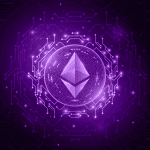
What is a Smart Contract in Blockchain and How Does it Work
A “smart contract” is a programme that runs on the Ethereum blockchain, and it is similar to a software application. An Ethereum smart contract is

Virtual reality (VR) simulates a 3D scene or image that a user can interact with as if it were real. VR may stimulate all the senses. Virtual reality (VR) can pique as many senses as possible. Video and audio are the most common senses, but touch and smell are also possible!
So, when you put on a virtual reality headset, you enter a seemingly real but digital environment. The computer, or the headset, acts as your ticket into the virtual universe. We know that virtual reality (VR) can seem daunting at first. A virtual world is a term more suited to a science fiction movie than a marketing campaign. Customers and businesses alike will benefit from your participation in this technological revolution. More people than ever before may enjoy the fruits of technological innovation and development, and the future of virtual reality promises even more exciting possibilities.

Betterment of our daily lives is inevitable with the development of VR technology. Smartphones will become more intelligent thanks to virtual reality technology, and the market will soon be flooded with other intelligent tools like VR goggles and VR devices. Virtual reality allows us to do things like view the lunar surface in three dimensions, travel through space without leaving Earth, and experience history (which is dull in theory) in a whole new way. There will be improvements and greater practicality in every facet of our lives.

A “smart contract” is a programme that runs on the Ethereum blockchain, and it is similar to a software application. An Ethereum smart contract is

Blockchain is one technology that is supposed to bring the internet into a revolution. Fintech, medical, medicine, insurance, digital security, and SaaS organisations are all

A blockchain engine, Hyperledger Fabric is an open-source blockchain platform that addresses the most critical parts of blockchain research and deployment in commercial applications. Bitcoin,

Virtual reality (VR) has impacted industries as diverse as health and tourism, and it’s part of many companies’ digital transformation efforts.
Manufacturing
Significant savings in money, time, and quality can be realized by the implementation of virtual technologies in the manufacturing process. Product designers and engineers can now look into options that they couldn’t before because they were too expensive or took too long to make.
Travel
We can now virtually travel to distant lands, experience new cultures through food, and eat unusual foods without leaving our chairs. The best hotels give tours so guests know what to expect. Virtual reality can enhance luxury trips (e.g., honeymoons or luxury resorts). The user can experience the location instead of watching a film or looking at flat graphics.
Gaming
Most people think of a video game when they hear the term “virtual reality.” There’s no reason to try to keep this fact from other people. When you think about how big the virtual reality gaming industry is and how quickly it is growing, it shouldn’t be a surprise.
Several patients with Parkinson’s disease have shown improvement after receiving treatment using VR, developed by the Spanish National Research Council. Everyone, from researchers to doctors to patients, stands to gain from this development. It’s exciting to contemplate the possibilities of VR therapy for helping people with difficulties like anxiety and eating disorders. Future medical professionals would benefit enormously from such instruction in medical school (empathy training, for example). In the medical field, virtual reality is already being employed for this purpose.
Education
Students can retain more of the knowledge that they learn thanks to the implementation of virtual reality, which is especially beneficial for students who are having difficulty academically.
Real Estate
The developers of a new invention can extend beyond 3D models and recreate life within their creation. Virtual reality would be useful in both residential and commercial settings. Additionally, virtual reality (VR) can be used in shared office spaces to give prospective tenants the feeling that they are already working there.